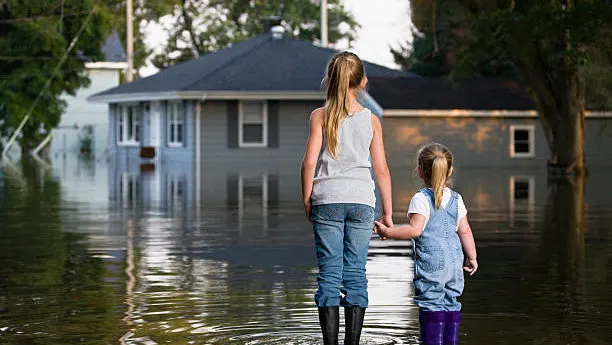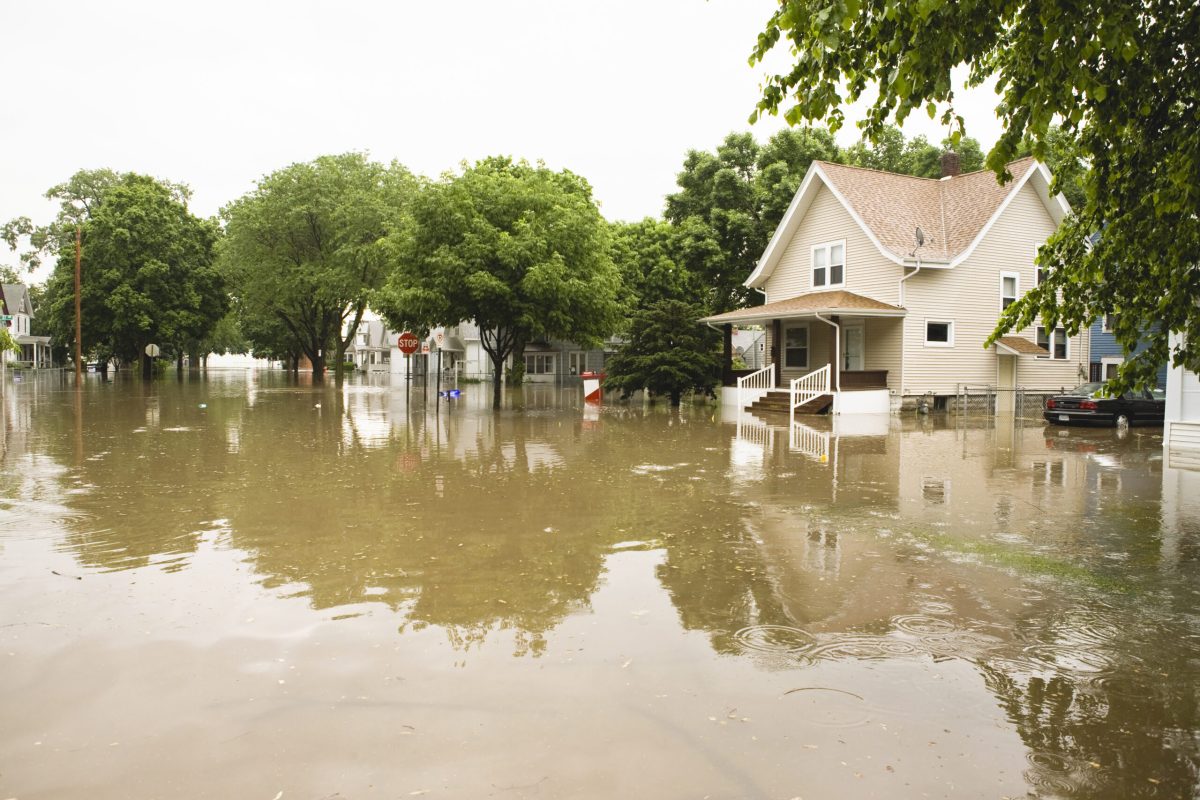Flooding is one of the most common and destructive natural disasters, affecting millions of homes and businesses every year. While standard homeowners’ insurance typically covers damage from events like fires or theft, it often excludes damage caused by flooding. This leaves property owners in high-risk flood zones vulnerable to significant financial losses unless they have specialized flood insurance. Understanding the importance of flood insurance, especially in high-risk areas, can protect both your home and your finances from the devastating impact of floods.
Understanding Flood Risk
Flooding can result from various causes, including heavy rains, storm surges, overflowing rivers, and rapid snowmelt. For those living in high-risk areas, the likelihood of flooding is greater, and the consequences can be far more severe. Areas near coastlines, rivers, or low-lying regions are particularly vulnerable, but even homes outside traditional flood zones can be at risk due to unpredictable weather patterns and climate change.
High-risk areas are typically designated by FEMA (Federal Emergency Management Agency) or other regional authorities. These areas, known as Special Flood Hazard Areas (SFHAs), have a higher than 1% annual chance of flooding, often referred to as the “100-year flood zone.” For property owners in these regions, flood insurance is not just recommended—it’s often required if they hold a federally-backed mortgage.
However, even if you live in a moderate or low-risk area, flood insurance is still worth considering. According to FEMA, nearly 25% of all flood insurance claims come from areas that are not considered high risk. Flooding can happen anywhere, and being unprepared can result in significant financial hardship.
Why Standard Home Insurance Doesn’t Cover Floods
Many homeowners mistakenly believe that their standard home insurance policy covers flood damage, only to find out too late that it doesn’t. While home insurance policies typically cover events like fire, theft, and windstorms, flooding is often explicitly excluded from coverage.
Flooding can cause extensive damage to the structure of your home, its foundation, electrical systems, plumbing, and more. Without flood insurance, you would be responsible for paying out of pocket to repair or replace any damaged property. For most homeowners, the cost of rebuilding after a flood is unaffordable without the protection provided by flood insurance.

Protecting Your Home and Belongings
Flood insurance provides peace of mind by ensuring that your home and belongings are covered in the event of a flood. Policies typically offer two types of coverage:
- Building coverage: This covers the physical structure of your home, including walls, floors, electrical systems, plumbing, and built-in appliances. It can also cover detached structures like garages and sheds.
- Contents coverage: This protects your personal belongings, such as furniture, clothing, electronics, and other valuables, from flood damage.
You can choose to purchase either building coverage, contents coverage, or both, depending on your needs. In high-risk areas, having both types of coverage is often essential to fully protect your property.
Flood insurance policies typically have limits on coverage amounts, so it’s important to review your policy carefully and make sure it covers the full replacement cost of your home and possessions. You may also want to consider additional coverage if your home contains high-value items like antiques, artwork, or expensive electronics that exceed the policy’s limits.
Mitigating Financial Loss
Without flood insurance, homeowners are left to pay for repairs, replacements, and rebuilding out of their own pockets. The average cost of flood damage can easily reach tens of thousands of dollars or more, depending on the severity of the flood and the extent of the damage.
Flood insurance helps mitigate these financial risks by covering the cost of repairs and replacement. It also provides access to funds quickly after a flood, allowing homeowners to begin the rebuilding process without delay. This is particularly important in high-risk areas, where repeated flooding events can cause ongoing damage.
Additionally, flood insurance can help protect your home’s resale value. If you live in a flood-prone area, prospective buyers may be hesitant to purchase a property without flood insurance, knowing that they would have to shoulder the risk themselves. By maintaining an active flood insurance policy, you provide reassurance to potential buyers and preserve the value of your investment.

Federal Flood Insurance Programs
In the United States, the National Flood Insurance Program (NFIP) is the primary provider of flood insurance for homeowners in high-risk areas. Managed by FEMA, the NFIP offers affordable flood insurance policies to help property owners protect their homes and businesses from flood damage.
While private insurers do offer flood insurance policies, NFIP policies are often more accessible and affordable for those in high-risk zones. If you live in an area that participates in the NFIP, you can purchase a policy through an authorized insurance agent. The NFIP offers coverage up to $250,000 for the structure of your home and up to $100,000 for your personal belongings.
It’s important to note that NFIP policies typically have a 30-day waiting period before coverage takes effect, so it’s crucial to purchase flood insurance well in advance of any anticipated flooding events, such as hurricane season. Waiting until a storm is imminent will likely leave you without coverage when you need it most.
The Role of Private Flood Insurance
While the NFIP is the most common source of flood insurance, private insurance companies also offer policies that may provide more extensive or flexible coverage. Private flood insurance may be particularly beneficial for homeowners who need higher coverage limits than those offered by the NFIP, such as those with high-value homes or expensive personal property.
Private flood insurance policies may also offer additional features, such as coverage for temporary living expenses if your home becomes uninhabitable due to a flood. They may also have shorter waiting periods and fewer restrictions than NFIP policies, making them a viable option for some homeowners.
However, private flood insurance policies can vary widely in terms of cost and coverage, so it’s important to compare your options carefully. Some lenders may require that homeowners in high-risk areas purchase flood insurance through the NFIP, but others may accept private policies as long as they meet specific coverage requirements.
Flood Insurance and Climate Change
As climate change continues to affect weather patterns, the frequency and intensity of floods are expected to increase in many parts of the world. Rising sea levels, more frequent heavy rainfall events, and more intense storms all contribute to an elevated risk of flooding, even in areas that were previously considered low risk.
For homeowners in high-risk areas, the threat of flooding is only growing, making flood insurance more important than ever. As flooding becomes more common, the financial risks of being uninsured will increase, along with the difficulty of rebuilding after a disaster.
While flood insurance can’t prevent floods from happening, it provides a vital financial safety net that allows homeowners to recover more quickly and effectively. As climate risks evolve, having flood insurance will be a crucial part of any comprehensive disaster preparedness plan.
Reducing Your Risk Through Flood Mitigation
In addition to purchasing flood insurance, homeowners in high-risk areas should take steps to reduce their risk of flood damage. Flood mitigation measures can help protect your home and lower your insurance premiums. Some common flood mitigation strategies include:
- Elevating your home: Raising the elevation of your home can reduce the risk of floodwaters entering the structure. Many flood-prone areas have building codes that require homes to be built above a certain elevation.
- Installing flood vents: Flood vents allow water to flow through a building’s foundation, reducing pressure on the walls and lowering the risk of structural damage.
- Improving drainage systems: Ensure that gutters, downspouts, and storm drains are clear and functioning properly to direct water away from your home.
- Using flood-resistant materials: When building or renovating, consider using flood-resistant materials for walls, floors, and insulation to minimize damage.
By taking proactive steps to reduce your flood risk, you can not only protect your home but may also qualify for discounts on your flood insurance premiums.
ghehoi.com offers expert advice and coverage options for all your insurance needs, ensuring peace of mind.
If you need advice on The Importance of Flood Insurance in High-Risk Areas please contact insurance.drozur.com for advice in the field of insurance worldwide:
Web: ghehoi.com
Add: 2500 WEST FWY, FORT WORTH, TX 76102-5852 USA
Email: insurance@ghehoi.com
Hotline: 088 526 489

Please read more articles, this is the content you need:
What to Look for in a Health Insurance Policy
Choosing the right health insurance policy is a crucial decision that affects not only your [...]
Sep
How to Get Life Insurance with a Chronic Illness
Securing life insurance is an important step in protecting your family’s financial future. However, if [...]
Sep
Comparing Health Insurance Plans: HMO vs. PPO
Choosing the right health insurance plan is a critical decision that can have a significant [...]
Sep
Understanding the Tax Benefits of Life Insurance
Life insurance is not just about providing financial protection to your loved ones in the [...]
Sep